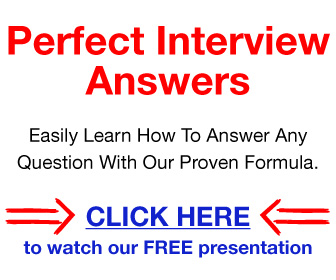You heard it again at an interview: “Tell me about a time when…” In fact these questions have become increasingly common. Here’s why and what you need to know.
Question Background
“Tell me about a time” is a standard introduction to behavioral interview questions. This introduction can be followed by a variety of different question endings. These include:
- “…you were extremely successful”
- “…you worked effectively as part of a team.”
- “…you solved a difficult problem.”
- “…you made a mistake.”
- “…you dealt with a difficult customer.”
This approach requires job seekers to provide an answer in the form of a story. Interviewers like this approach because it can be both more rigorous and fair.
Why more rigorous?
These stories give firm evidence of a job seeker’s ability in a certain area. If a job seeker can’t come up with a time when they used that skill, chances are his or her experience in that area is pretty limited.
Why more fair?
Because these responses are evidence and experience based, it’s easier for the interviewer to tell the difference between an overconfident big talker and an actual performer. Yet, that fairness relies on a pretty big assumption.
The assumption -
This interview approach assumes that every job seeker knows how to describe past professional experiences clearly and accurately. Yet, the truth is, that’s not often the case.
Effective responses to these questions require a specific structure. Now, natural storytellers use this structure without even thinking about it. For everyone else, we need more specific instructions.
If you expect this format in your next interview, here’s how to approach it.
How to answer “Tell me about a time when” Questions
For many people facing these questions, the most difficult aspect is coming up with a great example. Even when they have tons of experience, finding the right example for each specific question during the interview can be a challenging.
So, the first step is to identify these critical story experiences ahead of time. You can select short-term projects or long-term responsibilities. If you can think of examples where you took initiative, those are especially valuable.
These examples can be about professional projects, like that big client presentation, and relevant personal experiences, like organizing grandma’s 90th birthday with 80 guests. Such non-work stories are particularly valuable to young people with a short resume.
Try to identify these now. Take a few moments to write down your most memorable experiences. Include your proudest moments, difficult challenges you finally bested, and even more mundane examples where you just performed well. You’ll want five to ten potential experiences on your list.
The next step is to think about the results you produced with each example. What are the specific ways that each situation improved because of your actions? Numbers are very important. Before and after comparisons are great too.
Do your best to Identify both the small win and the big payoff. For instance, the best part of a baseball story isn’t when the ballplayer hits the homerun. It’s when the homerun helps the team win the World Series for the first time in about 80 years. That long-awaited World Series win is the big accomplishment the ballplayer uses to negotiate a big contract for next season.
If you can’t tell what is the biggest accomplishment, ask a friend to help you brainstorm. You may need a push to get started.
Now, with the beginning and ending ready, you simply need to mention each of the steps in between. Work step-by-step through the story, describing each action that you took. And don’t forget to include the journalists 5W’s: Who, What, Where, When and Why.
You’ve now overcome the biggest hurdles to answering the “Tell me about a time when” interview question.
If you want even more support, take a look below for more resources on how to prepare your story.

